Joget Migration Services: Move from Legacy Systems Easily
Date
Sep 25, 25
Reading Time
5 Minutes
Category
Low-Code/No-Code Development
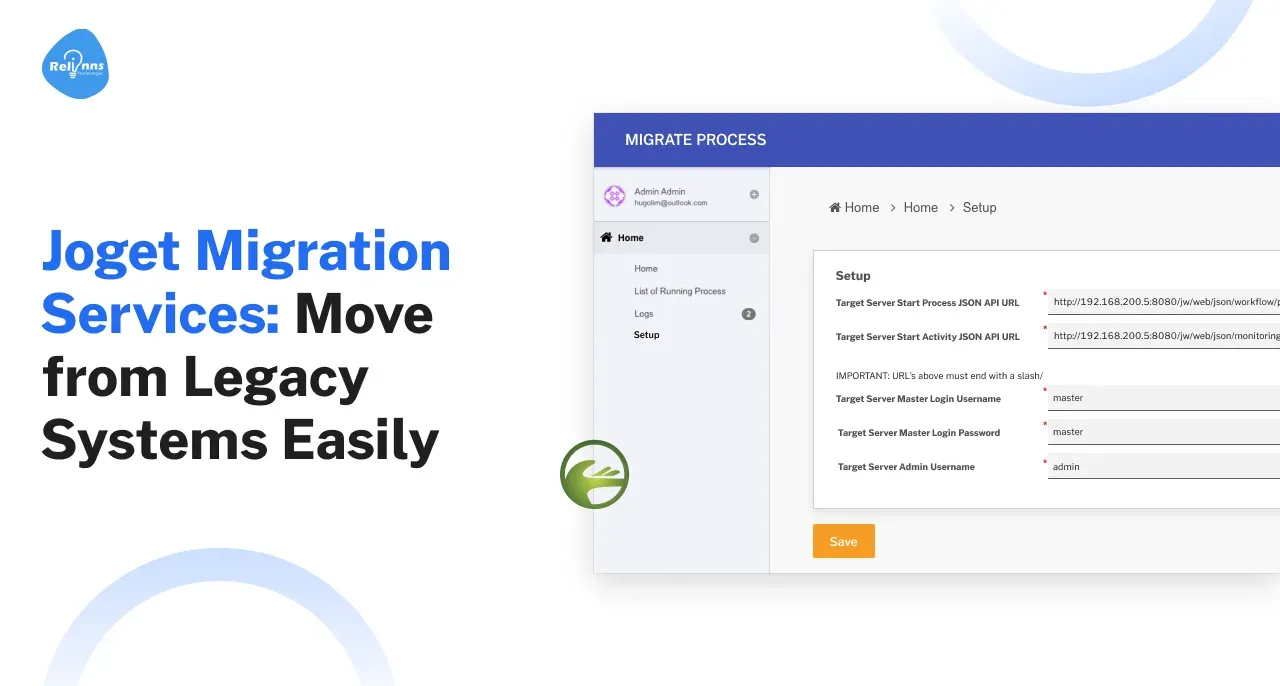
Suppose you’re stuck on legacy platforms, old Lotus Notes databases, sprawling Excel/Access apps, or monolithic custom systems. In that case, you already know the pain: slow changes, rising maintenance costs, and security worries.
A move to Joget DX enables you to rebuild those workflows on a modern, low-code BPM/workflow automation platform, delivering faster releases, improved governance, and cloud flexibility.
In this guide, we’ll show you what a smart migration looks like, the tools Joget provides (import/export, process-version migrator, marketplace plugins, API connector), a realistic timeline, and how companies like Sunway Group modernized their systems from Lotus Notes. We’ll also lay out exactly how Relinns runs migrations to minimize risk and downtime.
When to consider a Joget migration?
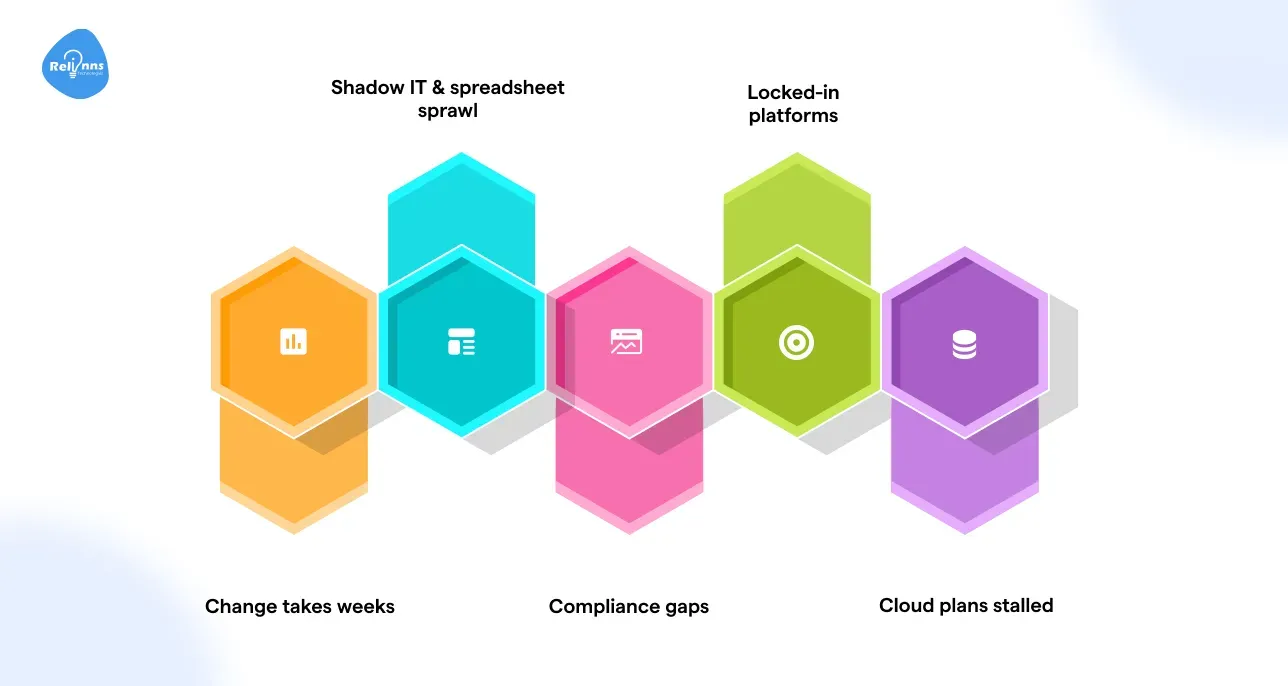
Before we jump into the “how”, it helps to check if you’re seeing the classic migration signals, if any of these sound familiar, you’re a strong candidate:
- Change takes weeks (or months). Every minor tweak needs a developer sprint, or worse, vendor tickets.
- Shadow IT & spreadsheet sprawl. Teams build their own tools because the core system can’t keep up.
- Compliance gaps. Audits continue to flag controls, access, or logging issues.
- Locked-in platforms. Legacy vendors sunset features, or licensing climbs yearly.
- Cloud plans stalled. The old stack can’t support a sensible cloud posture.
Suggested Reading: How to Reduce Development Costs Using Joget.
What are the migration approaches that actually work?
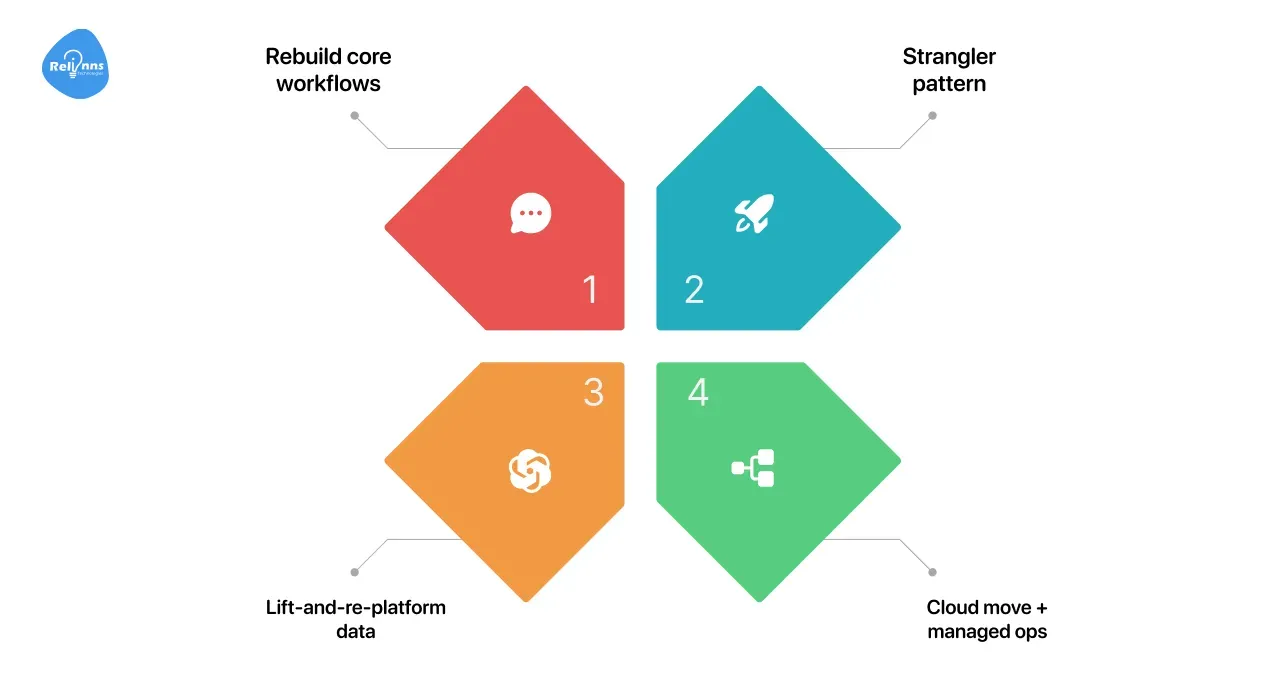
There isn't a single “right” method for every system. Here’s how we frame options with clients:
- Rebuild core workflows (most common). Recreate business processes in Joget App Composer and Data/Process builders; keep what works, fix what doesn’t. Reuse plugins from the Joget Marketplace to avoid reinventing the wheel.
- Strangler pattern (co-exist, then cutover). Stand up new Joget flows alongside the legacy app, swap traffic by module, and retire the old piece by piece.
- Lift-and-re‐platform data. Use the .jwa app export/import feature for packaged apps. For large datasets, prefer database dumps or ETL to preserve performance and integrity.
- Cloud move + managed ops. Shift to Joget Cloud/Managed Services to offload infra, maintenance, backups, and updates; or adopt Cloud Edition for multi-tenancy at scale.
The Joget toolset that de-risks migration
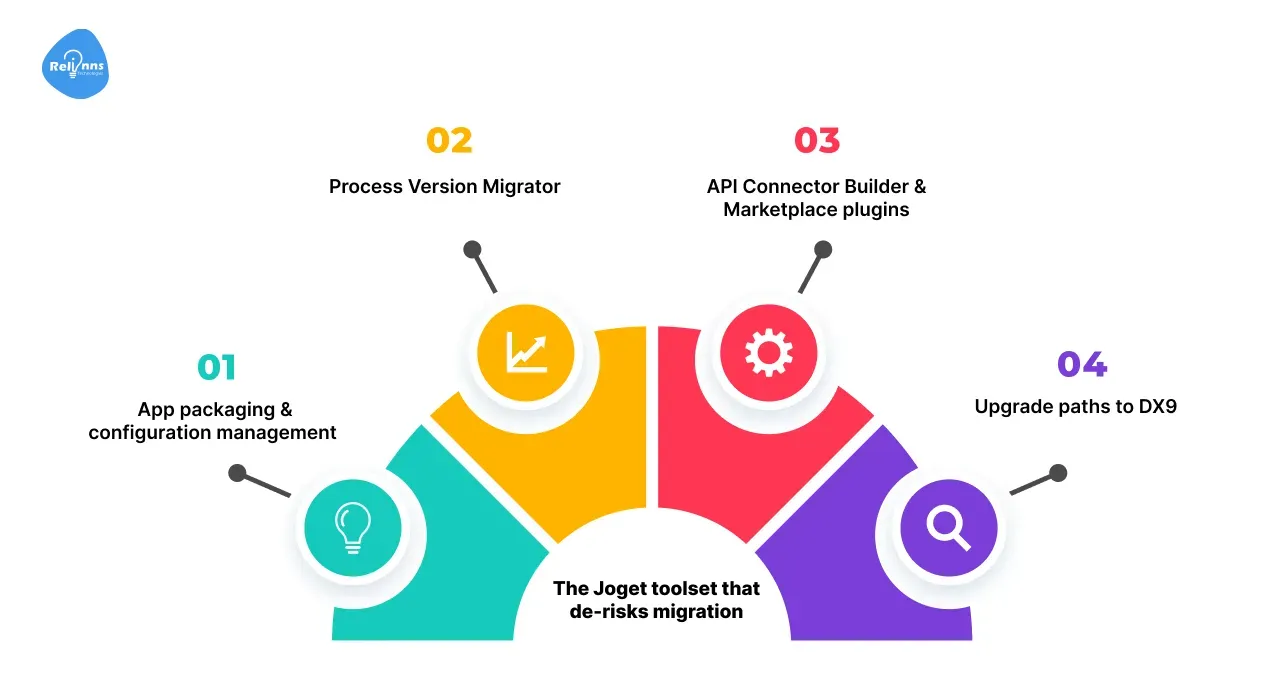
Before we list steps, it’s worth calling out the native capabilities that make migrations smooth:
- App packaging & configuration management (.jwa). Export an app with its definitions and import it into the target instance. For big record volumes, Joget recommends DB-level exports to avoid performance issues.
- Process Version Migrator. After importing a newer app version over an existing one, use the migrator utility to move running instances to the latest process design.
- API Connector Builder & Marketplace plugins. Connect to CRMs/ERPs/IDPs and extend without heavy custom code.
- Upgrade paths to DX9. Joget documents DX9 upgrades (Java 21, sys-reqs) and guidance for v6→DX, DX7/8→DX9, so that you can modernize the platform before or during migration.
- Managed Cloud & Cloud Edition. BYOL managed service and multi-tenant edition options help centralize admin, backup, and scaling.
A practical, low-risk migration plan (step-by-step)
Successful projects feel boring in the best way: clear phases, tight scope, and predictable cutovers. Here’s the playbook we use:
- Inventory & scope. Catalog legacy apps, stakeholders, data sources, SLAs, and compliance requirements. Decide “rebuild vs. retire vs. keep”.
- Target architecture. Select cloud/on-prem/, or managed, as well as identity (SSO/LDAP) and integration patterns; confirm the Joget version (ideally DX9).
- POC first. Rebuild one high-value workflow to prove feasibility, UX, and performance; adjust patterns and governance from lessons learned.
- Data strategy. For small datasets, plan a .jwa import; for large or regulated datasets, use SQL dumps/ETL, and migration windows.
- Build & integrate. Recreate forms, processes, and dashboards; plug in API Connector and Marketplace components; and add audit, role, and log functionality.
- Test & versioning. UAT across roles; if importing over existing apps, apply the Process Version Migrator to align running instances.
- Cutover & hypercare. Schedule phased go-lives, monitor KPIs (SLA, error rate), and run a 2–4 week hypercare with rollback options.
- Optimize & scale. Fold in additional modules; adopt Cloud Edition multi-tenancy if you’re serving multiple divisions or clients.
Real-world proof: legacy modernization with Joget
You don’t have to take our word for it. Here’s what official Joget stories show:
- Sunway Group: Lotus Notes to modern apps. Sunway worked with Joget to transition from legacy Lotus Notes applications to modern, maintainable workflows, showcasing how Joget can rejuvenate entrenched systems without a risky big-bang rewrite.
- Banking customer onboarding (booklet). Joget highlights a customer onboarding system built in ~3 months, deployed across channels, evidence that time-to-value is measured in weeks, not years.
Migration risks and how to mitigate them
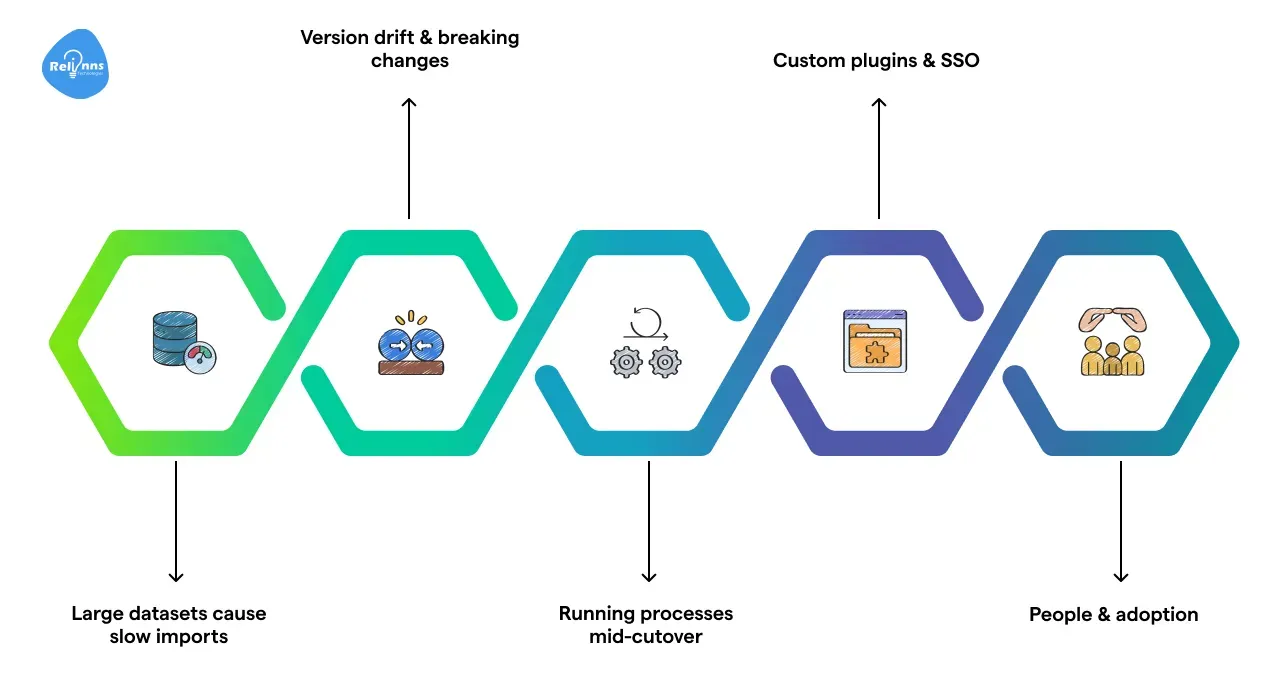
Every migration has edges. Call them out early, plan countermeasures, and your project stays boring (the good kind).
- Large datasets cause slow imports. Use DB dumps/ETL instead of only .jwa for heavy records; test performance with production-like volumes.
- Version drift & breaking changes. First, upgrade the platform (e.g., DX9 with Java 21), then migrate the apps; keep staging and production in lockstep.
- Running processes mid-cutover. Use Process Version Migrator to move in-flight instances to the latest design cleanly.
- Custom plugins & SSO. Inventory extensions up front; confirm equivalents or test porting to DX; validate SSO/LDAP paths early.
- People & adoption. Don’t forget training citizen developers and ops users need enablement, not just sign-off.
How does Relinns help you migrate (and de-risk) faster?
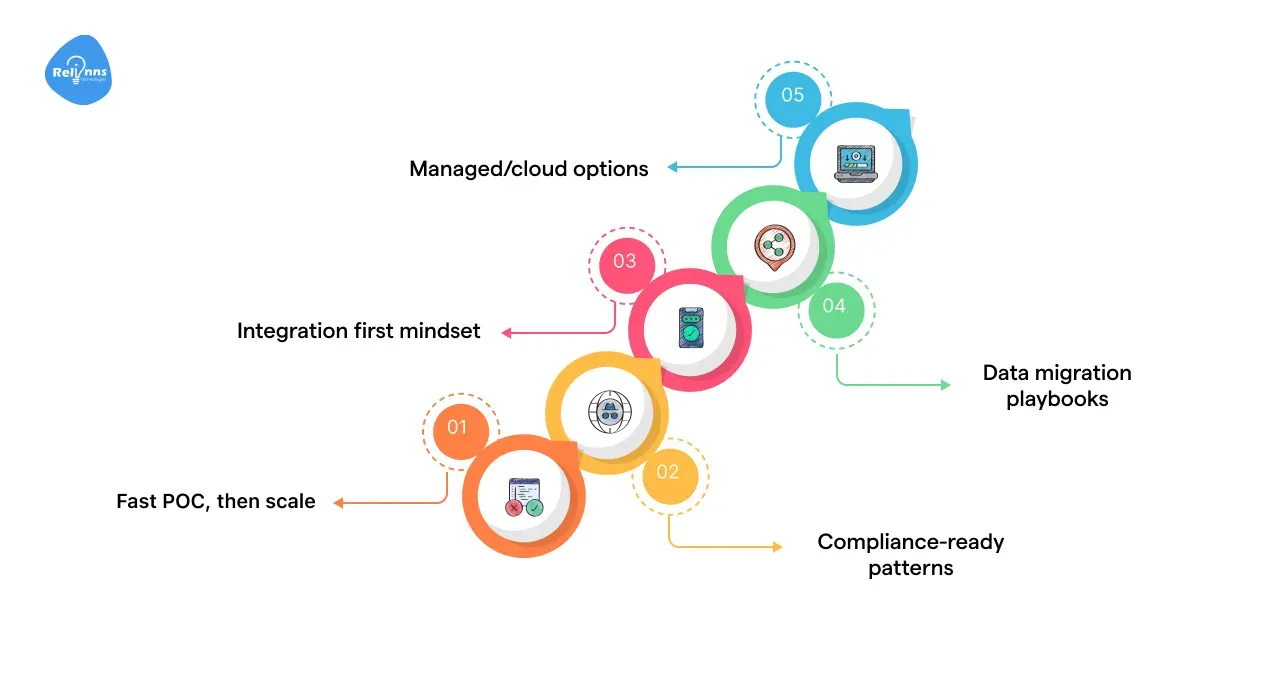
Getting ROI from Joget isn’t only about the platform; it’s about how you execute the migration. Here’s how our team makes it smooth:
- Fast POC, then scale. We achieve value in 2–4 weeks by implementing one high-value workflow before tackling the program.
- Compliance-ready patterns. We bake in audit trails, access controls, and logs for regulated sectors (finance, healthcare, public sector).
- Integration first mindset. Using Joget’s API Connector and proven marketplace components, we connect ERPs/CRMs/IDPs quickly.
- Data migration playbooks. For big tables, we plan DB dumps, reconcile with checksums, and run cutover windows with rollback paths.
- Managed/cloud options. We’ll help you decide between on-prem, Joget Cloud Managed Services, or Cloud Edition multi-tenancy, and we operate what we build if you want.
Cost, licensing & operations (the practical bits)
A few realities to plan for up front, this is where migrations stay on budget:
- Licensing. You can bring your own license to Joget Cloud Managed Services, or run Enterprise/DX9 on-prem. Cloud Edition fits multi-tenant needs.
- People. Budget time for UAT and training; the goal is to empower “citizen developers”, not bottleneck engineering.
- Run costs. Managed/cloud shifts effort away from patching and backups; on-prem keeps complete control. Pick what fits your governance.
Considering budget ranges & ROI?
See: How Much Does Joget Development Cost? and How to Choose the Right Joget Development Partner for deeper dives.
Conclusion: migrate once, scale for years
Modernizing to Joget DX is an opportunity to retire brittle legacy logic and replace it with governed, scalable workflows, eliminating the need for a risky, multi-year rewrite.
With the right plan, POC first, staged rollouts, careful data moves, and the Joget toolset, you can deliver value in weeks, not months, and keep scaling across teams as your needs grow.
If you’re evaluating a move off Lotus Notes, spreadsheets, or a custom legacy stack, we’ll help you design the path with clear checkpoints, rollback options, and measurable milestones.
Frequently Asked Questions (FAQ's)
How long does a typical migration take?
For a focused POC plus first production module, 8–12 weeks is common; larger programs scale over additional 6–12 week waves. (Timelines vary with complexity and data volume.)
Can I keep my data history?
Yes. Small sets often accompany .jwa imports; for large volumes, we use SQL dumps/ETL and reconcile with checksums before cutover.
What about in-flight processes?
When importing a new version over an existing app, use Process Version Migrator to move running instances to the latest design.
Should I upgrade to the latest Joget version first?
Best practice is to upgrade the platform first (e.g., to DX9/Java 21) in a staging environment, validate apps, and then migrate; it reduces variables during cutover.
Cloud, on-prem, or managed?
If you want minimal operational overhead, Joget Cloud Managed Services is BYOL and handles infrastructure and maintenance. The Cloud Edition suits multi-tenant use, while on-premises gives complete control under your governance.
Do you have examples of legacy transformation?
Yes, Sunway Group transformed legacy Lotus Notes apps using Joget, and Joget’s case-study booklet highlights rapid builds, such as customer onboarding, in ~3 months.


